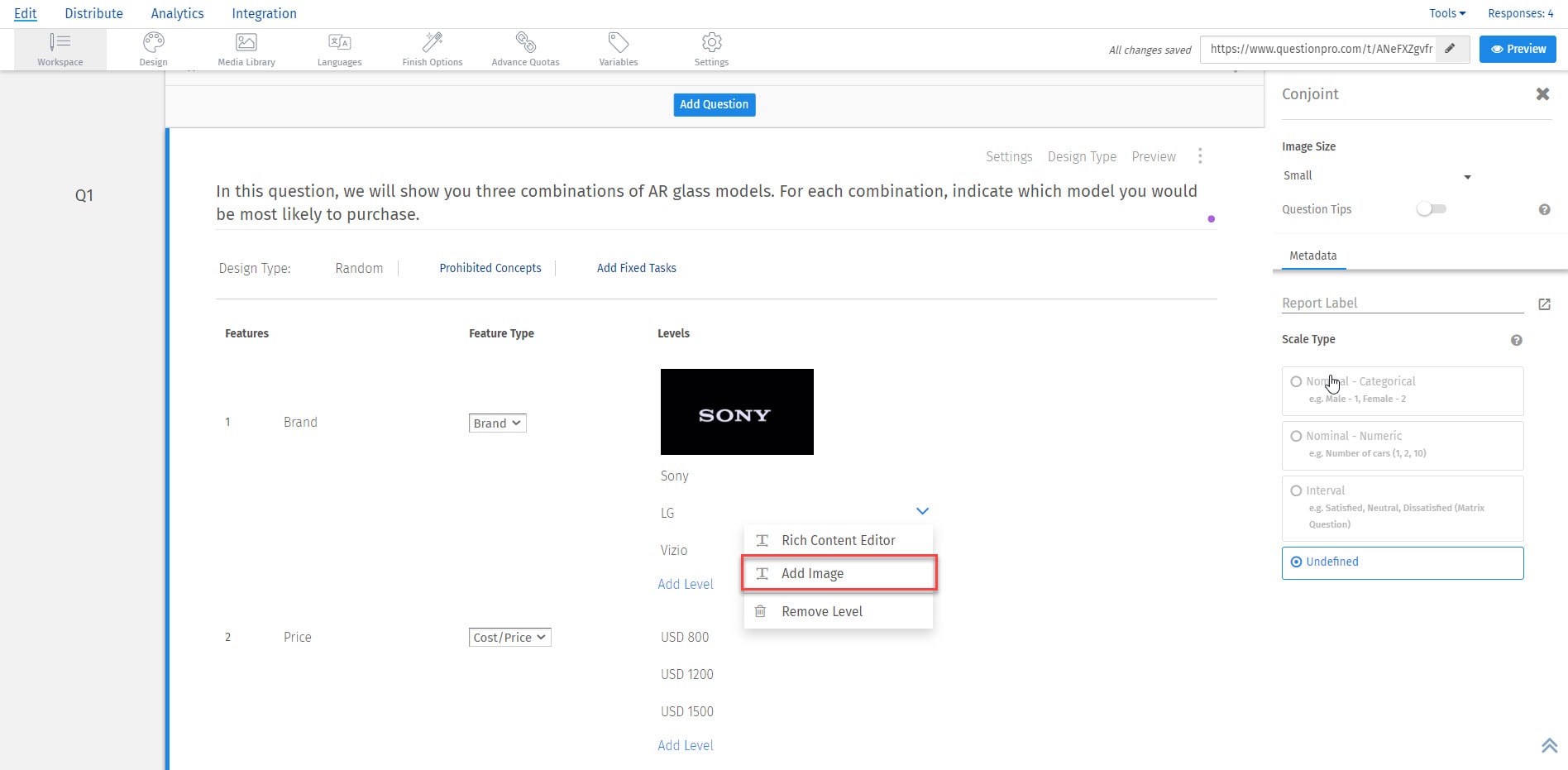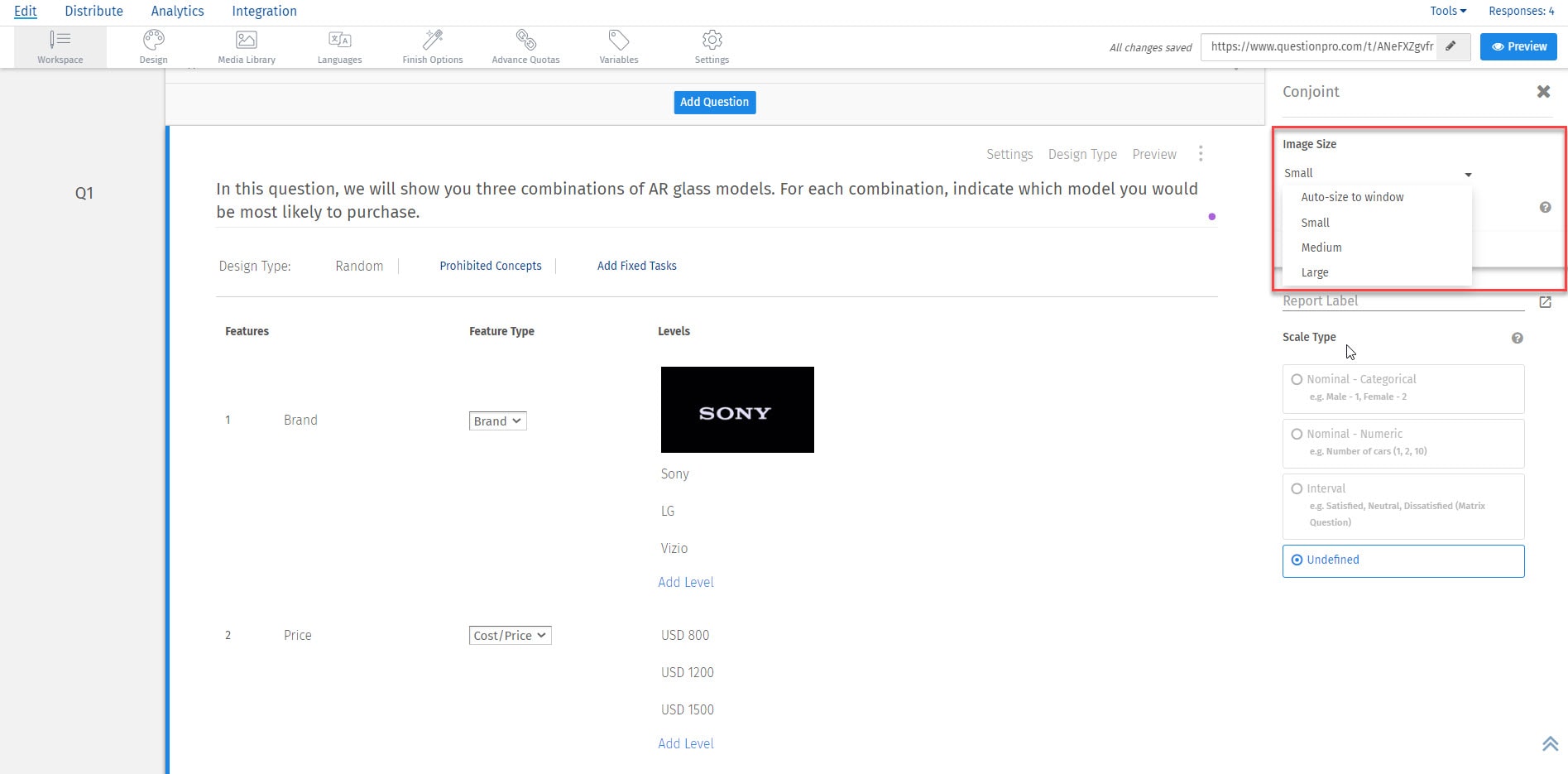
- Dashboard
- General reports
- Closed loop
- Weighted mean widget
- Push metrics
- Share dashboard link
- Sentiment and root cause analysis
- NPS Benchmark
- Priority Matrix
- Heatmap Widget
- NPS
- Designing CX Dashboard
- Sentiment Analysis Details
- Share Dashboard
- Enable Dashboard on Portal
- Custom Metrics
- Survey Resting Period
- Custom Metrics - Grid Widget
- CX Dashboard Sorting
CX - Choice Based Conjoint Study - Discrete Choice
Conjoint Analysis is one of the most effective models in extracting consumer behavior into an empirical or quantitative measurement. It evaluates products/services in a way no other method can. Traditional ratings surveys and analysis do not have the ability to place the "importance" or "value" on the different attributes, a particular product or service is composed of. Conjoint Analysis guides the end user into extrapolating his or her preference to a quantitative measurement. One of the most important strengths of Conjoint Analysis is the ability to develop market simulation models that can predict consumer behavior to product changes. With Conjoint Analysis, changes in markets or products can be incorporated into the simulation, to predict how consumers would react to changes.
Choice based or Discrete Choice Conjoint is by far the most preferred model for a conjoint questionnaire. This is primarily because it models after consumer behavior in real-life. Most purchases that consumers make today are basically trade-off based. Will you buy a 32" inch tv for 1500 USD sony brand or 36" inch tv for 800 USD LG brand.
Any product or service can be modeled as an entity with a set of attributes. For example TV models can have the following attributes:-
- Brand
- Price
- Size
| Brand | Price | Size |
| Sony | $1500 | 32" |
| LG | $800 | 36" |
| Vizio | $1200 | 39" |

Here are some simple steps to assimilate the information before beginning your online conjoint survey.
- Attributes: Define the attributes for your market segment. For most studies, try to keep the number of attributes below five. If you have a large number of attributes, try aggregating and combining these attributes into meaningful composite attributes.
- Levels: Define at least two levels for each of the attributes. Try to stick to a maximum of four or five levels per attribute.
- Minimal Respondent Base: Try to figure out if your respondent base is homogeneous. Are you interested in interaction of the conjoint data between different demographics? For example are you trying to figure out if Males place a higher value for miles than females in buying an airline ticket? In such a case your Minimal Respondent Base is ½ of all the participants (assuming equal distribution of males and females.)
- Minimal Choice Count for statistical validity: Try to come up with a minimum number of times a Level should be shown to the respondents to make a statistically valid sampling. For most conjoint studies a Minimal Choice Count of 100 to 150 should give good results. What this number represents is that, all attribute levels should be presented at least 100 to 150 times to make the results of the study statistically significant.
You do not need to come up with both the Minimal Respondent Base and Minimal Choice Count. If you have one, the Concept Simulator can determine the other. More details about the Concept Simulator are provided below.
To add an image click on the editor of level. Click on add image option. Upload and select an image from the library.

Once you add an image from the add image option, click on the settings. We provide customization to the size of the image. Default is auto-window. User can set it to small, Medium or large size which makes the image and the content within gthe image readable.

The goal of any conjoint survey is to assign specific values to the range of options buyers consider when making a purchase decision. Armed with this knowledge, marketers can focus on the most important features of products or services and design messages most likely to strike a cord with target buyers.

